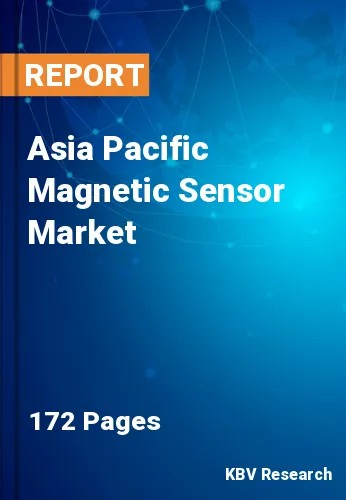The Asia Pacific Magnetic Sensor Market would witness market growth of 6.2% CAGR during the forecast period (2023-2030). In the year 2021, the Asia Pacific market's volume surged to 539.0 million Units, showcasing a growth of 6.2% (2019-2022).
Magnetic sensors find extensive use in industrial automation for position sensing and control. They are employed in machinery to detect the position of components, ensuring precise and reliable operation. This is particularly crucial in manufacturing processes where accuracy and repeatability are paramount. Magnetic sensors have applications in healthcare, especially in Magnetic Resonance Imaging (MRI) machines. These sensors are fundamental in capturing and processing magnetic signals, providing detailed images of internal structures in medical diagnostics.
Additionally, continuous sensor miniaturization is a significant development in the magnetic sensor industry. There is an increasing need for magnetic sensors that can be effortlessly incorporated into confined spaces while maintaining optimal performance as electronic devices shrink and become more compact. This trend is particularly evident in the consumer electronics and IoT sectors. The digital transformation across industries has fueled the demand for smart technologies, and magnetic sensors are no exception. Advanced digital magnetic sensors provide more precise measurements and enhanced data processing capabilities.
Moreover, the rise of e-commerce platforms in the Asia-Pacific region has transformed the retail landscape. Consumers increasingly prefer online shopping for consumer electronics due to convenience, a wide product range, and competitive pricing. As per the data provided by the Invest India, the electronics sector in India is valued at $155 Bn, with domestic production accounting for 65%. By FY26, the country's exports of electronic goods are expected to reach $120 billion. The export of electronic goods from India has increased from $5 Bn in FY17 to $24 Bn in FY23.Therefore, the growth of consumer electronics in the Asia Pacific region will pose lucrative growth prospects for the market.
The China market dominated the Asia Pacific Magnetic Sensor Market by Country in 2022, and would continue to be a dominant market till 2030; thereby, achieving a market value of $610.7 million by 2030. The Japan market is registering a CAGR of 5.5% during (2023 - 2030). Additionally, The India market would showcase a CAGR of 6.9% during (2023 - 2030).
Based on End-use, the market is segmented into Automotive, Consumer Electronics, Industrial, and Others. Based on Technology, the market is segmented into Hall Effect, Anisotropic Magnetoresistance, Giant Magnetoresistance, Tunnel Magnetoresistance, and Others. Based on Application, the market is segmented into Position Sensing, Speed Sensing, Detection/NDT, Navigation & Electronic Compass, and Others. Based on countries, the market is segmented into China, Japan, India, South Korea, Singapore, Malaysia, and Rest of Asia Pacific.
Free Valuable Insights: The Global Magnetic Sensor Market is Predict to reach $5.9 Billion by 2030, at a CAGR of 5.8%
The market research report covers the analysis of key stake holders of the market. Key companies profiled in the report include Honeywell International, Inc., Microsemi Corporation (Microchip Technology), NVE Corporation, NXP Semiconductors N.V., Robert Bosch GmbH, TDK Corporation, MEMSIC Semiconductor Co., Ltd. (IDG Capital Investment Consultant Beijing Co Ltd.), Infineon Technologies AG, Magnetic Sensors Corporation and MultiDimension Technology Co., Ltd.
By End-use (Volume, Million Units, USD Billion/Million, 2019-2030)
By Technology (Volume, Million Units, USD Billion/Million, 2019-2030)
By Application (Volume, Million Units, USD Billion/Million, 2019-2030)
By Country (Volume, Million Units, USD Billion/Million, 2019-2030)
Our team of dedicated experts can provide you with attractive expansion opportunities for your business.

